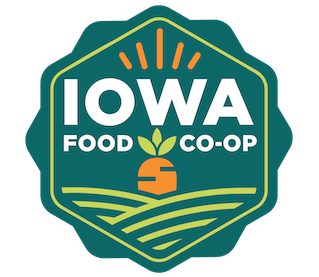
Many of you have ordered your Thanksgiving turkey, perhaps this is the first time you will roast a heritage turkey. Here are a few tips and more than one opinion on the best way to prepare your bird. I’ve included the links.
A tip from Local Harvest.org
http://www.localharvest.org/features/cooking-turkeys.jsp
Remember having to cover the breast with foil to keep it from drying out while the rest of the bird cooks — not with a heritage turkey. Their smaller breasts create a better balance between the dark meat and white meat, which means roasting a bird to perfection is much easier since white meat cooks quicker than the dark meat. If the breast is covered during roasting, it should be done with oiled parchment paper — not foil — which is then removed 30 minutes before the turkey is finished roasting.
Heritage turkeys are also much more lean and smaller than sedentary commercial birds. This means that fast cooking at high temperatures is a better method than slow roasting — another big plus since you won’t have to set your alarm to get the bird in the oven to be done in time for an early dinner. Heritage turkeys should be cooked at 425-450 degrees F until the internal temperature reaches 140-150 degrees F. Butter or oil can be added under the breast skin to add flavor and moisture during roasting.
Heritage Turkey recipe from Localharvest.org
Tips from Saveur Magazine http://www.saveur.com/article/Techniques/Heritage-Turkey-Tips
What exactly is a heritage turkey? According to the American Livestock Breeds Conservancy, it’s a naturally mating bird with a slow growth rate that spends most of its long life outdoors. (By contrast, industrially raised turkeys live in cages, are bred to grow quickly, and can reproduce only through artificial insemination.) In terms of flavor, a heritage bird is worlds away from the dry, tasteless turkeys most of us have grown up eating on Thanksgiving.
Unlike other turkeys, heritage birds live long enough to develop a layer of fat beneath the skin, which imparts a rich flavor to the meat. Mary Pitman, of Pitman Farms, says that they also “have larger thighs and legs because they still run and fly”; that produces especially dark, juicy meat from those parts. There’s no better time to switch to these sustainably raised animals; as farmer Frank Reese, a tireless advocate for heritage turkeys, says, “The best way to save these historic breeds is to eat them.” We couldn’t agree more. Below are tips and sources.
Skip the brine. Mary Pitman points out that the “real, authentic taste of a turkey” comes through when the turkey hasn’t been brined.
Wrap it up. Heritage breed birds, unlike industrially raised turkeys, have breast meat proportionate to the rest of their bodies. Although that’s good news for authenticity and flavor, the more modest-size breasts can dry out quickly; to offset that effect, barding (wrapping the bird with bacon or pancetta), topping the breast or the whole turkey with oil-rubbed paper or cheesecloth, or rubbing butter under the skin will help keep the meat moist.
Experiment with different preparations. Roasting may be the traditional cooking method, but heritage turkeys, owing to their robust flavor, cook well when braised in turkey or chicken stock, white wine, or even beer. They’re also delicious when fried in peanut oil.
Shorten the cooking time. Because heritage turkeys are almost always smaller than industrially raised birds, they require less time in the oven. When a thermometer inserted into the thigh reads 165 degrees, remove the bird.
Cook carefully. SAVEUR kitchen director Hunter Lewis recommends crisping the bird at 500 degrees for 20 minutes, then roasting at 325 degrees. As white meat and dark meat cook at different rates, some people cook the breast and legs separately.
Consider game recipes. Before deciding how to prepare your heritage bird, check out recipes for such game birds as guinea hen and pheasant, which, like heritage turkeys, are naturally lean and pair well with earthy flavors like herbs and bacon.
Another recipe for your cooking your heritage bird from Local Sustainability
Preheat oven to 325 degrees F.
Rinse your 10-15 lb turkey well with cold running water, both inside and out. Pat dry inside and out. Rub the inside of the turkey with mixture of 3/4 tsp salt and 1/4 tsp of fresh ground pepper. Use skewers to pin the neck skin to the underside of the bird and fold the wings behind the back, and then tie drumsticks together to reduce cavity space.
Rub the entire turkey with butter. Sprinkle approx. 1/2 tsp salt and 1/2 tsp fresh ground pepper on the outside of the turkey. Place turkey on a rack in a large roasting pan. Add 1-1/2 cups water to the bottom of the pan. Place open in oven for 30 min. Remove from oven, baste exterior with natural juices and melted butter from the pan. Cover tightly, return to oven. Continue to bake for 15-20 min per pound.
Add 1 medium diced onion to cavity. At this time you can add a small amount of herbs to the cavity. Rosemary, or sage impart a nice flavor. Return to oven in tightly sealed roasting pan. Bake according to time/weight ratio noted above.
To check doneness, the drumsticks will feel tender when pressed, and juices from the turkey will run clear. If using a meat thermometer, insert it into the inner thigh area, near the breast, but not touching the bone. It should reach 180 degrees.
30 mins before turkey is near completed baking time, remove cover, baste with the juice and butter mixture from the pan. Return to oven in open roasting pan to brown lightly.
Lastly, if none of those trip your trigger, here are a few more links with tips for cooking your turkey: More Heritage Turkey Tips
I hope this helps and I sincerely wish each of you a happy, healthy and food stuffed Thanksgiving!
Happy Eating and Leftovers!
Merry





